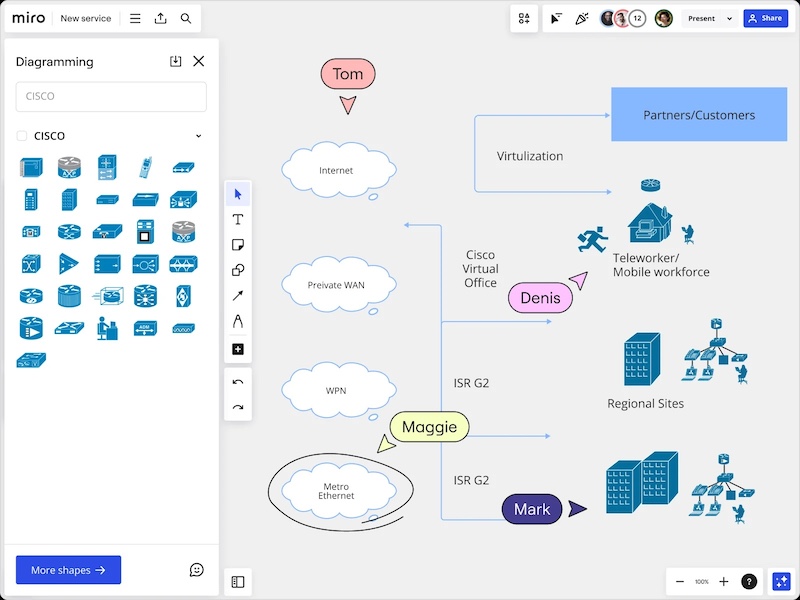
Streamlining Success: How Project Managers Can Optimize Workflow
In the dynamic field of project management, efficiency isn’t just an asset; it’s a necessity.
Project managers are continually looking for ways to optimize workflow, reduce waste, and deliver projects on time and within budget.
By streamlining processes and leveraging the right tools and strategies, project managers can significantly enhance the efficiency of their operations.
This comprehensive guide explores several key strategies for optimizing workflow in project management.
Establish Clear Objectives and Milestones
The foundation of an efficient workflow is the clear definition of project objectives and milestones.
Project managers should establish concrete, measurable goals at the beginning of a project and communicate these goals effectively to all team members.
This clarity helps in aligning the team’s efforts and provides a benchmark against which progress can be measured.
Milestones act as checkpoints throughout the project lifecycle that help to keep the team on track and can motivate and rally the team by celebrating small wins on the way to final delivery.
Utilize Network Diagrams for Enhanced Efficiency
One of the most effective tools for improving project workflow is the network diagram. Network diagrams are graphical representations of a project’s tasks and the relationships between them.
They are crucial in identifying the sequence of tasks, understanding dependencies, and planning the entire project structure efficiently.
Network diagrams help project managers visualize the critical path of a project—the sequence of dependent tasks that determine the project’s duration.
By focusing on the critical path, project managers can allocate resources more effectively, prioritize tasks, and anticipate potential bottlenecks before they cause delays.
Moreover, network diagrams online can be updated and adjusted as the project progresses, providing a dynamic tool for managing the project’s timeline.
The use of network diagrams also promotes transparency with stakeholders by providing a clear and understandable depiction of the project timeline and dependencies.
This transparency can help in managing expectations and in facilitating more effective communications about the project’s progress and potential challenges.
Emphasize Effective Communication
Effective communication is critical in project management. It ensures that everyone is on the same page and can dramatically reduce the time wasted on misunderstandings and misalignments.
Project managers should establish robust channels of communication and ensure regular and clear updates are shared with all stakeholders.
Tools such as digital communication platforms can facilitate seamless interaction among team members, whether they are in the office or working remotely.
Regular meetings and updates keep everyone informed about the project’s progress and any upcoming challenges.
Implement Agile Methodologies
Implementing Agile methodologies is a transformative approach for project managers aiming to optimize workflow and increase productivity.
Agile is founded on principles of flexibility, iterative progress, and stakeholder feedback, making it particularly suited to environments where requirements and goals evolve rapidly.
This methodology encourages short, manageable cycles known as sprints, where tasks are broken down into smaller, more manageable components.
Each sprint ends with a review and retrospective, allowing the team to assess what has been accomplished and to adjust the workflow for future sprints based on lessons learned.
The iterative nature of Agile allows for continuous improvement and adaptation, which is crucial in responding to changes without significant setbacks or delays.
By fostering a collaborative environment, Agile methodologies promote open communication and collective accountability among team members. This ensures that issues are identified and resolved quickly, keeping projects on track and within scope.
Leverage Technology and Tools
In the realm of project management, leveraging technology and tools is crucial for optimizing workflow and enhancing productivity.
Modern project management software offers a suite of features designed to streamline the planning, execution, monitoring, and completion of projects.
These tools facilitate task management through automated scheduling, tracking, and updating of project tasks, allowing project managers and team members to focus more on critical work rather than administrative duties.
Technologies such as cloud computing enable real-time data sharing and collaboration among dispersed teams, ensuring that all members have access to the latest updates, documents, and communication threads, regardless of their physical location.
Additionally, tools for risk management and analytics help project managers forecast potential delays and bottlenecks, enabling proactive mitigation strategies.
By integrating these technological solutions, project managers can significantly reduce wasted time and resources, align team efforts more closely with project goals, and achieve smoother, more efficient project workflows.
Foster a Collaborative Team Environment
The efficiency of a project workflow is also dependent on the team’s ability to work collaboratively.
Project managers should cultivate an environment where team members feel empowered to share their ideas, give feedback, and take initiative.
Collaborative tools such as shared workspaces, real-time document editing, and cloud-based project management software can enhance teamwork by making collaboration easier and more effective.
Encourage Continuous Learning and Improvement
A commitment to continuous learning and improvement can drive workflow efficiency in the long run. Project managers should encourage their teams to learn from each project and to seek ways to improve processes and outcomes.
Conducting post-project reviews to identify what worked well and what didn’t can provide valuable insights that can be applied to future projects.
Streamlining workflow in project management requires a combination of clear planning, effective communication, and the strategic use of tools and technologies.
By adopting agile methodologies, leveraging tools like network diagrams, and fostering an environment of collaboration and continuous improvement, project managers can significantly enhance their efficiency.
This not only leads to successful project outcomes but also builds a resilient team capable of handling the complexities of modern project demands.

